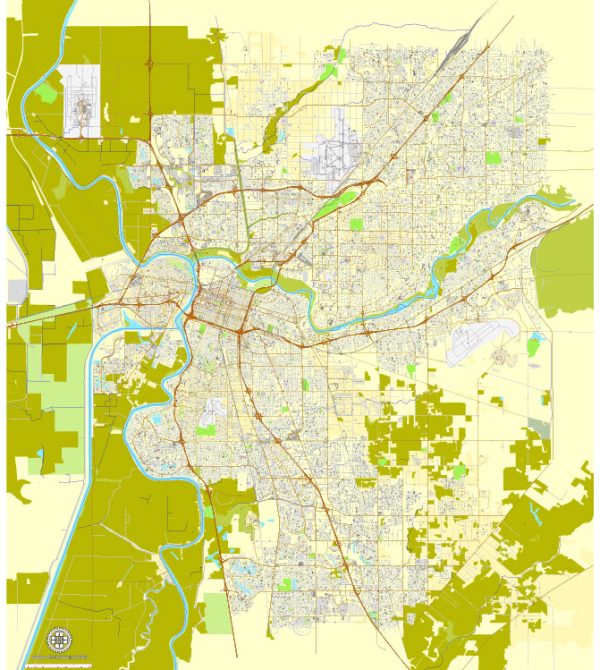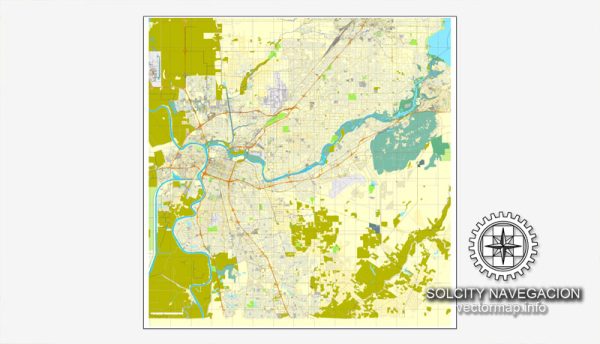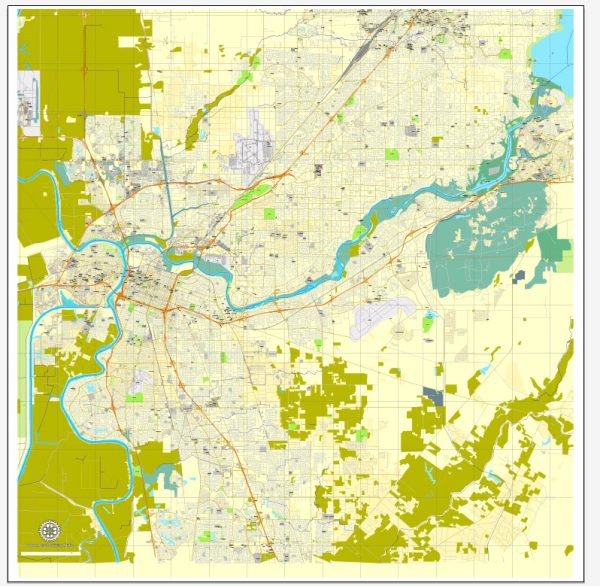Sacramento, the capital city of California, has a rich history of urban development that reflects the broader trends and challenges faced by many American cities. Here is a brief overview of Sacramento’s urban development history:
- Early Settlement and Gold Rush (1840s-1850s): Sacramento’s history traces back to the 1840s when John Sutter established Sutter’s Fort. The discovery of gold in nearby Coloma in 1848 led to the California Gold Rush, and Sacramento quickly became a major distribution point and transportation hub for gold seekers heading to the Sierra Nevada foothills.
- Railroad Hub (1860s-1870s): The completion of the First Transcontinental Railroad in 1869 solidified Sacramento’s importance as a transportation center. The city’s economy boomed as it became a major hub for the Central Pacific Railroad. The Old Sacramento Historic District preserves the architectural and historical heritage from this period.
- Agriculture and Water Development (Late 19th Century): Agriculture played a crucial role in Sacramento’s economy during the late 19th century. The development of irrigation systems, such as the Folsom Dam, allowed for increased agricultural productivity in the region.
- Early 20th Century: Sacramento continued to grow in the early 20th century, with the expansion of residential areas and the establishment of institutions such as Sacramento City College. The construction of the Tower Bridge in 1935 further connected the city to West Sacramento.
- Post-World War II Suburbanization (1940s-1960s): Like many American cities, Sacramento experienced significant suburbanization in the post-World War II period. The construction of highways and the availability of affordable housing in the suburbs led to population growth outside the city center.
- Government and Infrastructure Development (1970s-1980s): Sacramento’s status as the state capital played a key role in its development during the late 20th century. The construction of the California State Capitol Mall and the expansion of government offices contributed to the city’s growth.
- Urban Revitalization (1990s-Present): In recent decades, Sacramento has undergone efforts to revitalize its downtown area. Projects such as the Golden 1 Center, the home of the Sacramento Kings NBA team, and the redevelopment of the Railyards have aimed to attract residents, businesses, and tourists to the city center.
- Challenges and Opportunities: Like many cities, Sacramento faces ongoing challenges related to urban development, including issues of housing affordability, transportation, and sustainable growth. Efforts are being made to address these challenges while preserving the city’s historical and cultural heritage.
In summary, Sacramento’s urban development history reflects its role as a key transportation hub, its connection to the Gold Rush and agriculture, and its evolution into a state capital with a diverse and growing economy. Ongoing efforts continue to shape the city’s urban landscape, balancing growth with the preservation of its historical character.




 Author: Kirill Shrayber, Ph.D.
Author: Kirill Shrayber, Ph.D.